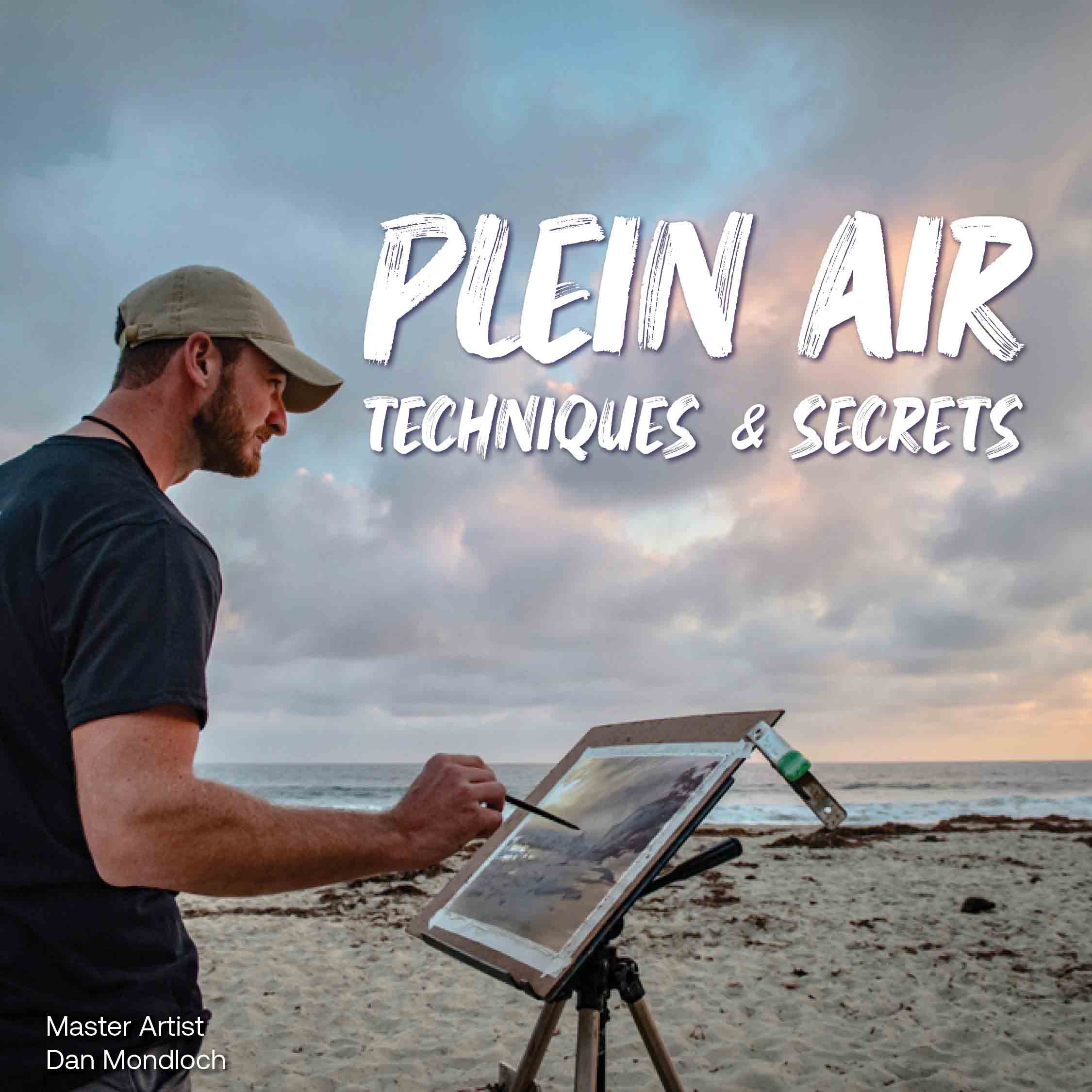Plein Air Techniques and Secrets for Beginners
4 Plein air TIPS for success
‘Tis the season for painting en plein air! This popular technique gets you out into nature to paint, capturing the light, colors, and atmosphere of a scene. It’s an excellent way to hone your skills in both painting and observation. If you’re looking to take your painting outside, don’t forget these essential plein air techniques for beginners to help you get started.
1. Simplify the Scene
It’s easy to be overwhelmed by the sheer amount of detail outdoors when plein air painting, so first simplify what you see. Look for your scene’s main ideas—basic shapes and relationships between size and value.
If it helps, try squinting your eyes to blur your vision. Blurry vision can help you pick the main shapes and leave the distracting details. Your goal as a plein air painter is to render your scene into simple, clear, powerful images.
2. Sketch First
Do a few sketches and value studies in a sketchbook to make sure your composition is going to work before you waste a few hours trying to wrestle a painting that isn’t planned properly. Using a marker, create notan sketches to select the best scene or part of a scene. These sketches are also great practice in simplifying shapes, which will help you come out with a stronger painting.
“Don’t just copy what is in front of you. Think about editing or adding things that might improve the painting and put some of yourself and your own ideas and feelings into your work!”—Mastrius Master Artist Ned Mueller
3. Don’t Let Daylight Dull Your Painting
Daylight is powerful. If you paint with direct sunlight on your surface, colors that appeared bright and vibrant outside will turn dull and lifeless when viewed indoors. Even a cloudy day offers significantly more light than an indoor room. To avoid losing both contrast and intensity of color in your painting, set up an umbrella to shade your surface and color palette. If you find yourself without an umbrella, be sure to bump up the contrast and brightness of the colors you paint.
4. Keep Your Painting Small
When painting outdoors, the elements, and especially the light, can change quickly. You have a window of no more than two hours before your light changes and, in low-light situations like sunsets, your light can change in seconds. Keeping your painting small helps you establish the values and color quickly before you lose the light you are trying to depict.
When you start plein air painting, limit your surface sizes to 8”x10” or 9”x12”. As you get more comfortable painting, you can increase the size of your surfaces.
What are you waiting for? let’s paint Plein air!
There are a myriad of plein air painting techniques to learn and the more you paint, the more you’ll discover tips and secrets of your own! Start with these pointers, and you’ll be ready to begin your plein air adventure!

Be MENTORED in plein air technique!
Join a monthly art mentorship group with top tier plein air Master Mentors.
Receive regular guidance and encouragement in a small group setting to succeed in your plein air painting.
